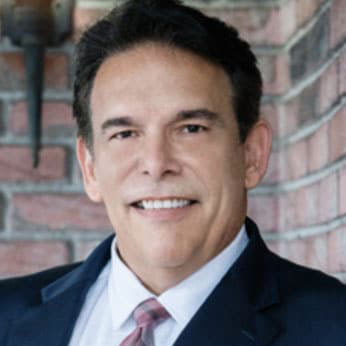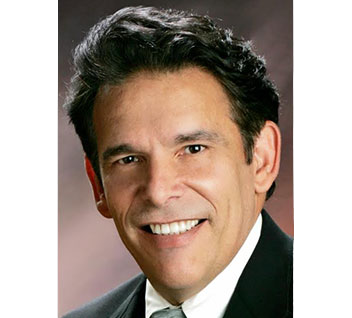Welcome to the Sunshine State... that’s probably one of the reasons why so many of us love our motorcycles.
Whether for recreation or transportation, there are nearly 600,000 registered motorcycles in Florida. That makes us the state with the second-largest number of motorcyclists (second to California, which has more than 800,000).
Unfortunately, Florida is also near the top of the list for the number of motorcycle fatalities.
Florida has the fourth-highest number of fatalities, at 10.06 fatalities per registered motorcycle (or approximately 590 fatalities per year). The only states with higher fatality statistics are Mississippi, Texas, and South Carolina.
Let’s talk about the laws that you must follow as a Florida motorcyclist. They’re designed to keep you — and everyone on the road around you — as safe as possible.
Required protective equipment for Florida motorcyclists
As you probably know, Florida seatbelt laws require drivers and front seat passengers to wear a seatbelt, as well as a passenger under the age of 18 in the back.
Along those lines, there are also laws for protective equipment that’s required for you to hit the road on your motorcycle.
Florida motorcycle helmet laws
It’s always a good idea to wear a helmet, whether or not it’s required by law.
Florida helmet law states the following:
- You must wear a helmet while riding a motorcycle in Florida if you’re under the age of 21.
- If you’re over the age of 21, you can ride a motorcycle without a helmet so long as you have a $10,000 medical insurance policy that would cover you for injuries resulting from a motorcycle crash.
- You’re not required to wear a helmet if you’re 16 or older and if you’re operating or riding a motorcycle with a displacement of 50 cubic centimeters or less, or is rated at 2-brake horsepower or less, and which is incapable of propelling itself at a speed of more than 30 miles per hour on level ground.
Florida motorcycle equipment requirements
- Eye protection. A Florida motorcyclist is required to wear goggles or other eye protection that’s approved by the Department of Transportation.
- Lights and mirrors. A motorcyclist must have working headlights, tail lights, reflectors, turn signals, and left- and right-side rear-view mirrors.
- Passenger equipment. If you have a passenger, the passenger must have their own seat and footrest.
- License plates. A motorcycle is required to have a license plate, just like a passenger car would. If the bike is registered to a rider under age 21, the plate must be a different color and design.
- Handlebars. The handlebars must not be higher than the motorcycle driver’s shoulders.
Florida motorcycle endorsement
Florida requires motorcycle operators to have either a motorcycle endorsement on your driver’s license or a “Motorcycle Only” license.
Here’s how to obtain a Florida motorcycle endorsement:
- Have a valid Class E operator’s driver’s license.
- Complete and pass a Basic RiderCourse or Basic RiderCourse updated with an authorized sponsor.
- Provide proper ID and course completion information, and pay an endorsement fee to either your local driver's license office or tax collector’s office that issues driver’s licenses.
Rules of the road for Florida motorcyclists
In Florida, the rules of the road apply to everyone — passenger car drivers, motorcyclists, truck drivers, and anyone else who shares the road. That means no weaving in and out of traffic, obeying traffic signals, and maintaining speed with the flow of traffic.
Although you have the same obligations as any other driver, motorcyclists also have the same rights.
You’re entitled to use your full lane, and 2 motorcyclists are allowed to share a lane. Riding 2 abreast within the same lane is permitted, and cars must allow you your own lane, but you may not drive between lanes of traffic.
Is lane-splitting legal in Florida?
Lane-splitting is not legal in Florida.
Lane-splitting is when a motorcycle rides between 2 lanes of traffic. California is the only state that has made lane-splitting legal. In the other 49 states — including Florida — it’s not permitted.
Motorcycle insurance in Florida
Florida is a no-fault state. That means when an accident happens, the at-fault driver pays for the injuries and damages suffered by the other driver. “Fault” in an accident can be attributed to a single driver, or it could be split between drivers.
Every registered vehicle in Florida must have Personal Injury Protection (PIP) insurance. This no-fault insurance pays for your own medical expenses after an accident, regardless of who was at fault. However, Florida no-fault PIP law doesn’t apply to motorcycles.
Florida does have a Financial Responsibility (FR) law, which applies to both cars and motorcycles.
There are two ways to get motorcycle insurance in Florida:
- Buy coverage from an insurance carrier.
- Obtain a self-insurance certificate from the Bureau of Financial Responsibility based on net worth.
Florida motorcycle insurance minimums are:
- $10,000 for one person for bodily injury
- $20,000 for two or more people for bodily injury
- $10,000 per crash for property damage
When to call a Florida motorcycle accident lawyer
A motorcycle accident can be more complicated than a “regular” car accident in a variety of ways.
For starters, it’s possible that you did nothing wrong, but you’re a victim of motorcycle bias — you know, when someone assumes you were at fault just because you’re a biker. That’s not necessarily true, and there are responsible and irresponsible motorcyclists, just like there are for drivers of any other kind of vehicle.
But sometimes, police, other drivers, and even witnesses report an accident through the lens of assuming that the motorcyclist was wrong and the car driver was right. And your lawyer can help prevent that bias from wrecking your settlement.



 George Lorenzo is the founder of Lorenzo & Lorenzo, a top-rated and well-respected law firm in Tampa, FL that specializes in personal injury, auto accidents, premises liability and wrongful death. We understand the many ways in which a serious accident can affect your quality of life – financially, physically and emotionally. When facing legal action in court, the process can quickly become overwhelming, regardless of which side of the table you are on. View
George Lorenzo is the founder of Lorenzo & Lorenzo, a top-rated and well-respected law firm in Tampa, FL that specializes in personal injury, auto accidents, premises liability and wrongful death. We understand the many ways in which a serious accident can affect your quality of life – financially, physically and emotionally. When facing legal action in court, the process can quickly become overwhelming, regardless of which side of the table you are on. View